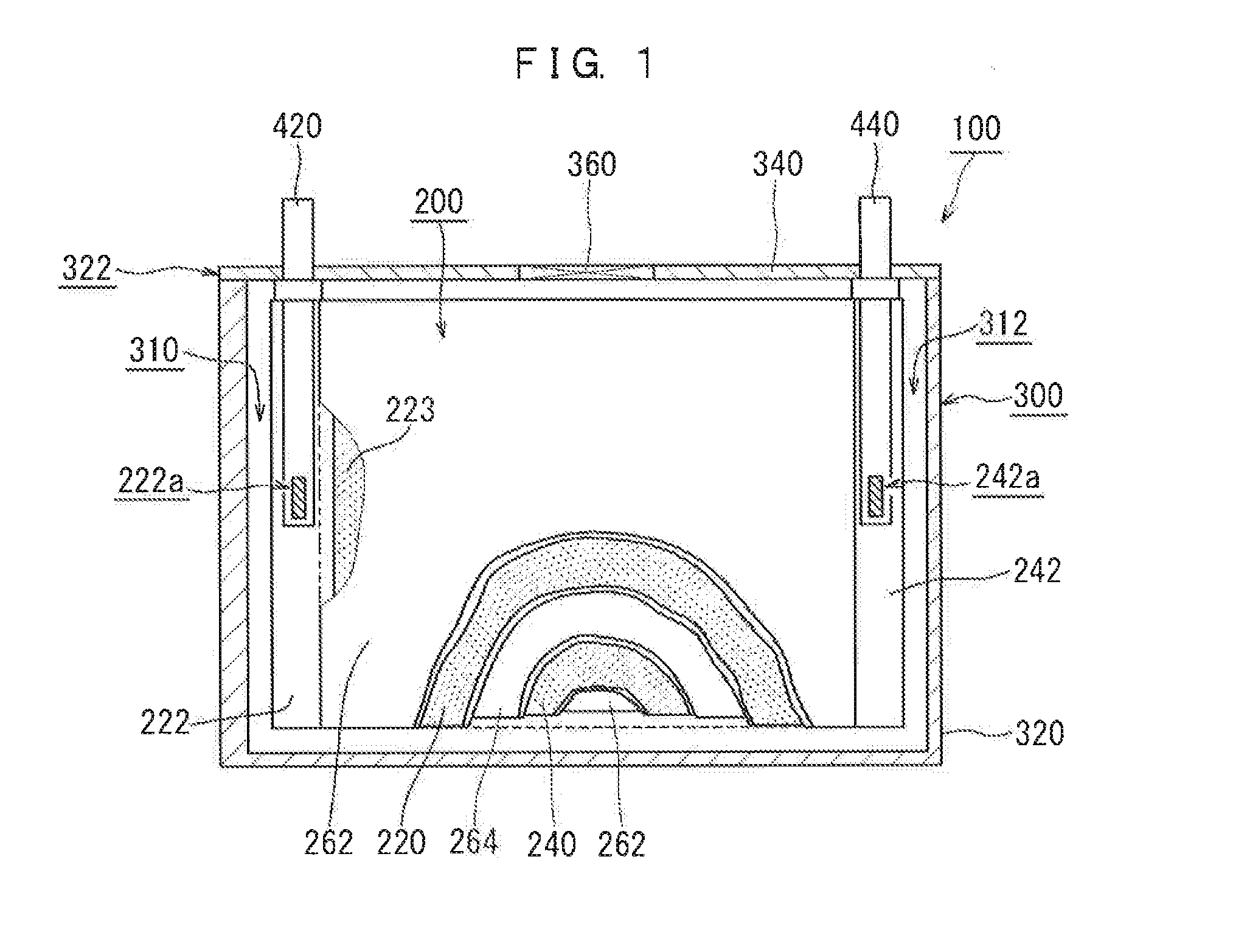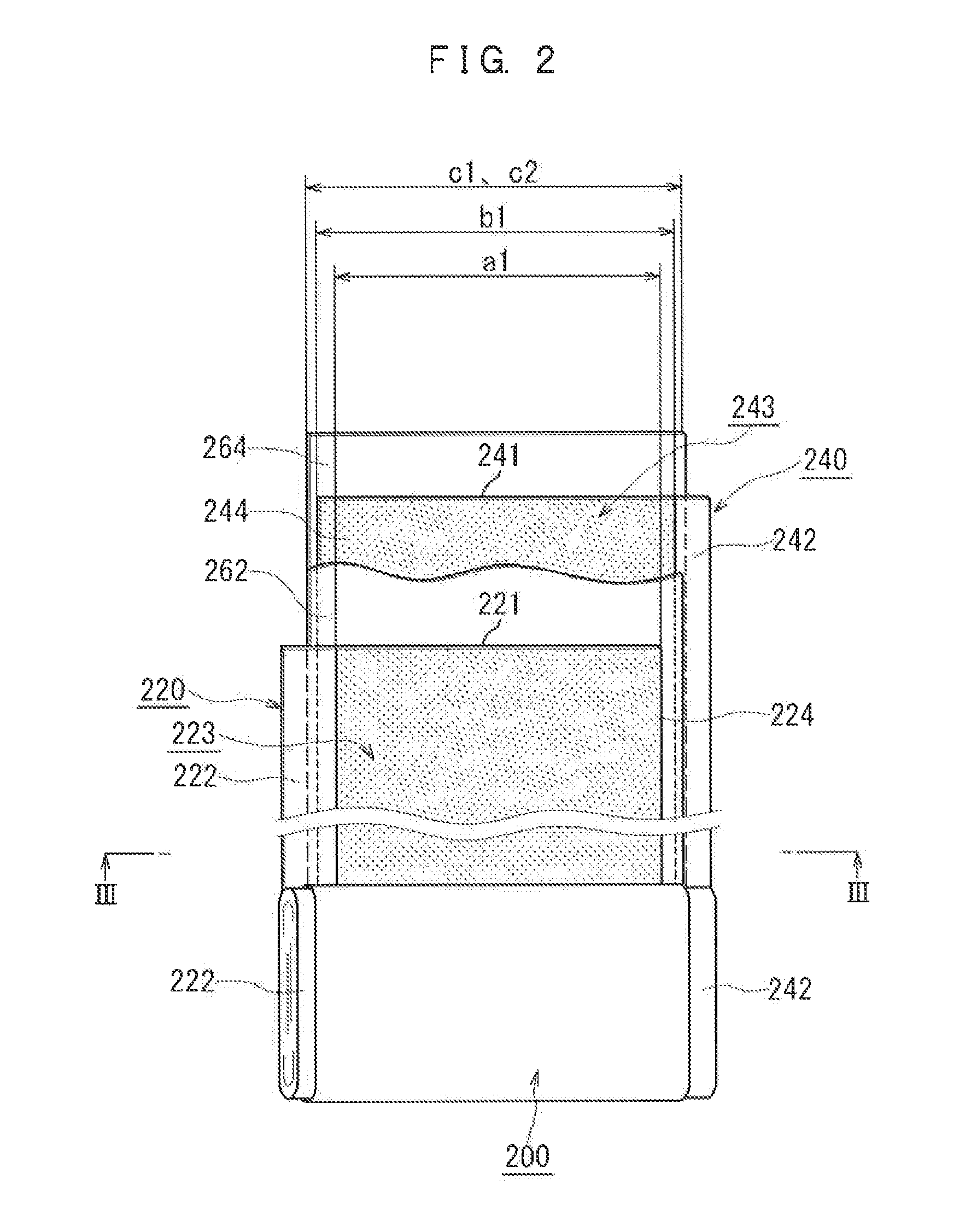Secondary battery
a second-generation battery and battery technology, applied in the field of second-generation batteries, can solve the problems that the simple evaluation of dbp adsorption may not be sufficient to obtain the required performance in applications
- Summary
- Abstract
- Description
- Claims
- Application Information
AI Technical Summary
Benefits of technology
Problems solved by technology
Method used
Image
Examples
Embodiment Construction
[0023]Hereinafter, a secondary battery according to an embodiment of the present invention will be described with reference to the drawings. Members and portions that produce same effects are denoted by same reference characters whenever appropriate. In addition, it will be recognized that the respective drawings are merely schematic renderings and therefore are not necessarily actual reflections of the elements shown. First, an example of a structure of a lithium-ion secondary battery will be described as one example a secondary battery according to the present invention. Subsequently, a positive electrode mixture layer of a lithium-ion secondary battery will be described. Finally, an evaluation test of a lithium-ion secondary battery will be described.
[0024]FIG. 1 shows a lithium-ion secondary battery 100. As shown in FIG. 1, the lithium-ion secondary battery 100 comprises a wound electrode body 200 and a battery case 300. Furthermore, FIG. 2 is a diagram showing the wound electro...
PUM
| Property | Measurement | Unit |
|---|---|---|
| particle diameter | aaaaa | aaaaa |
| specific surface area | aaaaa | aaaaa |
| opening width | aaaaa | aaaaa |
Abstract
Description
Claims
Application Information
 Login to View More
Login to View More - R&D
- Intellectual Property
- Life Sciences
- Materials
- Tech Scout
- Unparalleled Data Quality
- Higher Quality Content
- 60% Fewer Hallucinations
Browse by: Latest US Patents, China's latest patents, Technical Efficacy Thesaurus, Application Domain, Technology Topic, Popular Technical Reports.
© 2025 PatSnap. All rights reserved.Legal|Privacy policy|Modern Slavery Act Transparency Statement|Sitemap|About US| Contact US: help@patsnap.com



